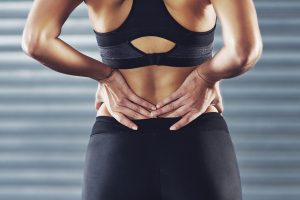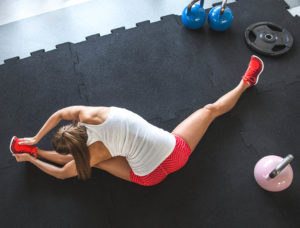We’ve all been there. The agonising next day after a brutal training session where it hurts so much just to sit on the toilet, brush your teeth or even walk down stairs. You start to question yourself as to whether the pursuit of fitness is really worth all this pain and effort.
Let’s face it. If it was easy, everyone would do it and getting those glorified abs popping through your tight skin wouldn’t be such a precious milestone.
But the very fact that you are reading this article means that you want to understand why the pain is happening and how to deal with it without giving up on your training. Good for you!
Together, we will go through the journey from the origin of delayed onset muscle soreness (DOMS) and its symptoms, to ways to cope with it while still continuing with your workout routine.
First thing’s first—what is DOMS?
Delayed onset muscle soreness or muscle fever is the weakness and muscle pain which begins up to a day after an exercise you are not familiar with, peaking up to two days later. It is particularly prevalent if that exercise has an eccentric component.
Eccentric exercises are where the muscles are contracting and lengthening at the same time. Think of top down exercises (e.g. lowering yourself down slowly from a pull up or lowering yourself slowly on a squat) as well as explosive landing drills like box jumps or plyometrics. Because it peaks a day or two after an unfamiliar exercise, the condition has the “delayed onset” description in its name. Sometimes, DOMS can cause such a severe pain that people can mistake it for muscle strain, which unlike DOMS, is an actual injury.
What causes the muscle fever?
It is simple: the harder you train, the more fatigued you’ll get. But not all workouts can lead to DOMS. Generally, more difficult sets with higher training volume can produce more soreness, while intensive cardio workouts with shorter rests result in less soreness.
However, DOMS is not a regular fatigue, and it does not come from training hard. It is caused by increased time under tension, and in particular the eccentric portion of the muscle contraction—the lowering of the weight, and inexperience in a specific exercise.
You are less likely to experience muscle fever as you become more advanced and keep doing the same workout for some time.
What can you do to minimise soreness?
The most important question to answer is how to go through a couple of days of delayed onset muscle soreness without forgetting the idea of ever working out again? Since it is still unclear what precisely causes DOMS, it is very difficult to determine how to treat it effectively.
Almost nothing trainees have tried so far is impressive, but there are some helpful methods and assets that can alleviate the pain and fasten the recovery. Here are some of our top tips:
#1 Time
Embrace the pain and take some active recovery time to yourself. Long walks are great to keep the blood flowing, which will promote faster recovery without further damage from muscle contractions.
#2 Natural muscle relaxers
Taking a plant-based natural muscle relaxer which supports sore muscles and muscle spasms can diminish the tension and make movements of the sore muscles easier and less painful. Some of the stress relieving plants and ingredients to look for are valerian root, passion flower, chamomile, calcium, and magnesium. Magnesium is one of the most widely used supplements for recovery, based on its properties of central nervous system replenishment and relaxing muscles. Whilst it will not reduce the actual pain, it could help speed up the recovery process.
#3 Heat and blood flow
Some studies showed that pulsed ultrasound and deep heat can prevent and ease the pain in the muscles, to a certain point, because they are decreasing the intramuscular pressure and inflammatory response. Despite the old methods of icing, this can actually have negative effects due to restricting blood flow and slowing down the recovery process. Whilst you may numb the pain temporarily, you will be prolonging the process.
#4 Instant relief
For an instant relief, you can take ibuprofen and similar anti-inflammatory drugs but think of them as a band-aid that will cover only one-third of the “wound”. They will not make the muscles recover faster, only treat the pain for a short time. This is suggested only in rare occasions where the pain in unbearable and not to be taken willy nilly.
Among the plentitude of suggested treatments presumed to be effective, you will hear about massages, compression garments, icing, and Epsom salt. Most of them are just assumptions, and some (e.g., icing) even harmful.
If you have found a remedy that you feel helps with the perception of pain, then by all means continue this.
So, to cut a long story short: if you are experiencing severe DOMS, give your muscles time to heal and recover before you get back to intense training. You can also try to minimise the chance of muscle fever by avoiding switching up your exercises too frequently and staying consistent with a particular modality.
The most important tip you can get is: Don’t let DOMS discourage you from following your dream of physical fitness!



